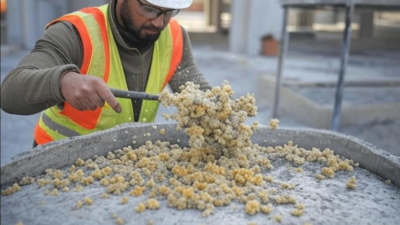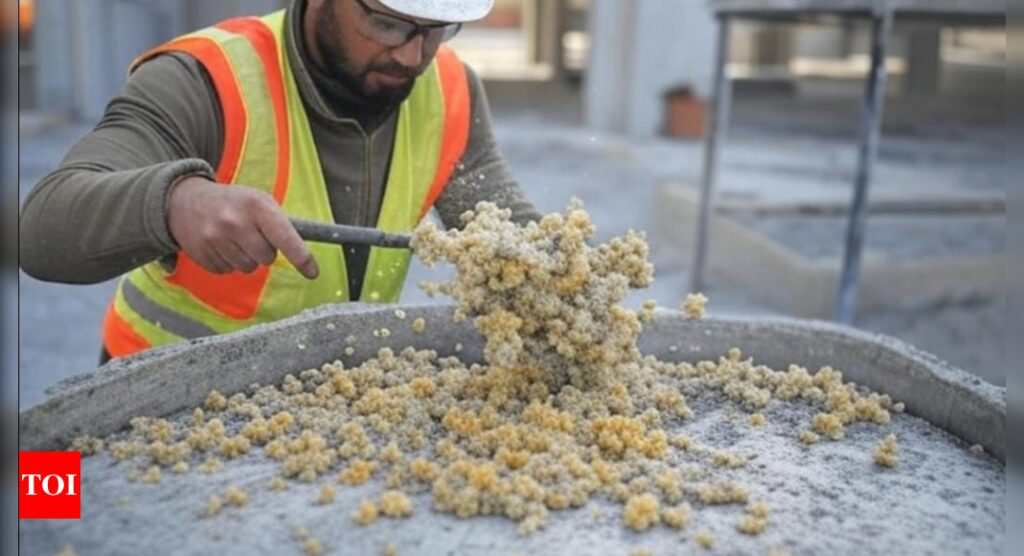
INDORE: Researchers at the Indian Institute of Technology (IIT) Indore have found a unique way to use food waste, by mixing it along with a non-pathogenic bacteria in concrete which can double its construction strength and reduce carbon emissions. When the food waste rots, it releases carbon dioxide. If the bacteria and food waste are mixed in concrete, then carbon dioxide reacts with calcium ions present in concrete to form calcium carbonate crystals, Professor Sandeep Chaudhary, who is part of the research team, told PTI on Wednesday.
These crystals fill the holes and cracks present in the concrete and make the concrete solid without having any significant effect on the weight, the professor of the institute’s Department of Civil Engineering said.
“We mixed non-pathogenic bacteria (a variety of E. Coli) in food waste like rotten fruit pulp and their peels and mixed it in concrete. This doubled the strength of concrete,” Chaudhary said.
The specialty of this bacteria is that it stops growing as soon as the holes and cracks are filled, due to which there is no damage to the construction later, he added.
“In our research we have focused on domestic food discards (cauliflower stalk, potato peel, fenugreek stem and orange peel) and spoilt fruit wastes (rotten papaya pulp),” Chaudhary said.
The usage in concrete was defined based on the available water content in the waste. Low moisture waste were processed as powder, then mixed with water to create a consistent liquid, while high moisture waste was processed as pulp to create a consistent liquid, he said.
Professor Hemchandra Jha, of the IIT Indore’s Department of Biosciences and Biomedical Engineering, who was also involved in the research, said in the old applications of mixing bacteria in concrete, synthetic chemicals were used which made this process expensive and less sustainable.
In the research at the IIT Indore, food waste was used instead of synthetic chemicals, to reduce the cost of this process. The food waste dissolves in water along with the bacteria and easily gets mixed in concrete, Jha said.











